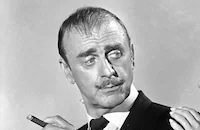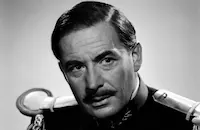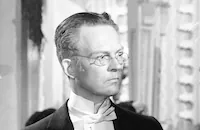To begin with, Schary assigned the production to director Clarence Brown, a long-time studio veteran. To many that might have seemed a strange choice. Brown was best known as one of Greta Garbo's favorite directors on films like Flesh and the Devil (1926) and Anna Karenina. On Plymouth Adventure, he even used her favorite cameraman, William Daniels, who did a brilliant job of combining the special effects work with sweeping vistas of the Atlantic. But Brown had another specialty as a director often overshadowed by his work with the Swedish superstar. From Ah, Wilderness! in 1935 to Intruder in the Dust in 1949, he had helmed a string of powerful family films, often with a keen sense of the American spirit. That made him the perfect choice to captain this tale of some of the first Americans.
For the screenplay, Brown turned to one of his favorite writers, Helen Deutsch, who had written National Velvet. Drawing on Ernest Gebler's popular historical novel she tried to fill in the blanks in the historical records of the Pilgrims' journey with strong helpings of adventure and romance. Chief among her inventions was a complicated emotional relationship between Spencer Tracy as the Mayflower's irreligious captain and Gene Tierney as the wife of Pilgrim leader William Bradford. The romantic plot climaxes with Tierney's possible suicide when she falls from the ship as it sits at anchor in what would one day be called Cape Cod. And fanciful as that plot turn may have seemed, it actually anticipated later suggestions from historians that Dorothy Bradford may indeed have killed herself in despair over the harsh land she was expected to call home.
Every department at MGM contributed to making Plymouth Adventure a breathtaking film experience. Designers tried to capture a sense of life on the Mayflower, while Deutsch and Brown earned praise for the details of the Pilgrims' day-to-day existence. And composer Miklos Rozsa drew on tunes from an actual Pilgrim psalm book, in particular the hymn "Confess Jehovah Thankfully," which captures the immigrants' courage and abiding faith.
With all of that impressive detail, Plymouth Adventure should have been a big hit. Years later, Schary would admit he was wrong to fight his MGM bosses, who didn't want him to make the expensive film. He had some justification in light of the studio's recent success with such epics as King Solomon's Mines (1950), Quo Vadis? (1951) and Ivanhoe (1952), but he would later remember an early silent called The Mayflower that destroyed the career of popular star Charles Ray. Plymouth Adventure did much the same damage to several of those involved with it. Brown was so exhausted by his work on the production that he retired from directing, though he enjoyed a long and happy retirement away from storms at sea (or in the front office). Star Spencer Tracy was so fed up with the films the studio offered him that Schary had to threaten a lawsuit to get him to show up on the set of his next film. Ironically, it turned out to be one of his biggest hits, Bad Day at Black Rock (1955).
Producer: Dore Schary
Director: Clarence Brown
Screenplay: Helen Deutsch
Based on the Novel by Ernest Gebler
Cinematography: William H. Daniels
Art Direction: Cedric Gibbons, Urie McCleary
Music: Miklos Rozsa
Costume Design: Walter Plunkett
Film Editing: Robert Kern
Cast: Spencer Tracy (Captain Christopher Jones), Gene Tierney (Dorothy Bradford), Van Johnson (John Alden), Leo Genn (William Bradford), Dawn Addams (Priscilla Mullins), Lloyd Bridges (Coppin).
C-107m. Closed captioning.
by Frank Miller






































